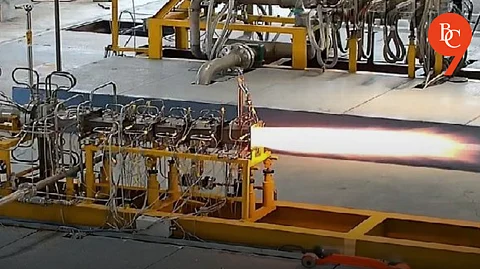

On April 25, 2025, the Defence Research & Development Laboratory (DRDL), a Hyderabad-based lab under the Defence Research and Development Organisation (DRDO), successfully conducted a long-duration ground test of its Active Cooled Scramjet Subscale Combustor for over 1,000 seconds at the newly established Scramjet Connect Test Facility in Hyderabad. This achievement is a major milestone in India’s hypersonic weapon technology development.
This test builds upon an earlier successful scramjet combustor test of 120 seconds conducted in January 2025. The extended duration test validates the design and operational stability of the scramjet combustor, which is critical for sustained supersonic combustion required in hypersonic cruise missiles. Such missiles can travel at speeds exceeding Mach 5 (more than 6,100 km/h) for long durations using air-breathing propulsion systems.
The scramjet engine’s ability to maintain stable combustion at supersonic airflow speeds—often described as “keeping a candle lit in a hurricane”—is a technological challenge that DRDO has successfully overcome through innovative flame stabilization and advanced computational fluid dynamics simulations. The indigenous development of endothermic scramjet fuel, which improves cooling and ignition ease, along with advanced thermal barrier coatings capable of withstanding extreme temperatures, further enhances the engine’s performance and durability.
Raksha Mantri Rajnath Singh congratulated DRDO, industry partners, and academia for this remarkable achievement, highlighting it as a reflection of the government’s commitment to advancing critical hypersonic weapon technologies. DRDO Chairman Dr. Samir V Kamat and other senior officials also lauded the team for demonstrating supersonic combustion for over 1,000 seconds, paving the way for upcoming full-scale flight-worthy combustor tests.
This breakthrough positions India among the few nations actively developing hypersonic cruise missile capabilities, alongside the USA, Russia, and China. The successful ground test not only proves the scramjet combustor design but also establishes the readiness of the test facility, marking a strong foundation for India’s Hypersonic Cruise Missile Development Programme.
